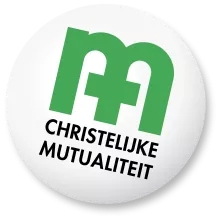Third party payment scheme
Doctors can apply the third-party payment scheme for all services.

Since January 2022, all healthcare providers can apply the third-party payment scheme for all services, regardless of the patient's status or age.
The third-party payment arrangement means that the healthcare provider or care institution receives reimbursement for the health and disability insurance directly from CM. The patient only pays any co-payments .
The third-party payer scheme makes care more accessible to everyone. People who are temporarily in a vulnerable situation or have a low income can use it.
When are you required to apply the scheme?
As a general practitioner you must apply the third-party payment scheme for:
- patients with the increased compensation ;
The paying third party scheme applies to consultations and technical services during consultations.
The application of the third-party payment scheme for these patients is always mandatory, even if your patient asks not to apply the scheme.
More information can be found on the Riziv website.
- follow-up of a patient with type 2 diabetes (performance 102852) who requests the arrangement;
- remote consultations .
When is the scheme not recommended?
Patient is not well
Request cash payment and advise your patient to make arrangements with CM.
If you invoice with third party payment, you will not receive a refund .
You can check the patient's insurability via MyCareNet (message 801000). If the patient is not in compliance, you will receive message 801900 with the code 000 in zone 328 (CG1) and 000 in zone 329 (CG2).
Patient is registered with a medical home (only for general practitioners)
Request cash payment and provide the certificate of assistance provided to your patient, who will receive the reimbursement at the medical home.
If you invoice via third party payment, you will not receive a refund .
You can check whether your patient is registered in a medical home via MyCareNet (message 801000). You will then receive message 801900 with the number 1 in the second position in zone 380.
What are the rates?
The co-payment varies depending on the patient's situation. That is why it is important to always check the correct rate (eTAR) .
If you invoice electronically, your software package often automatically shows which rates and co-payments should be charged.
More information and details about the rates.
When to give evidence to your patient?
In the context of the transparency law, you must provide your patient with proof.
With electronic invoicing , this must be done in two situations:
- if only reimbursable benefits are provided;
- if reimbursable and non-reimbursable benefits in kind are provided simultaneously.
For paper invoicing :
- if reimbursable and non-reimbursable benefits in kind are provided simultaneously.
More information can be found in the overview table 'Documents to be delivered' . It states, among other things, which information must be included on the supporting document.
Where can you go with questions and problems?
For support and questions about the third-party payment scheme, you can contact your Unique Contact Point (UCP). If you don't know your UCP, you can look it up on this page .
If you have any questions about the operation of your software package , please contact your software supplier directly.
